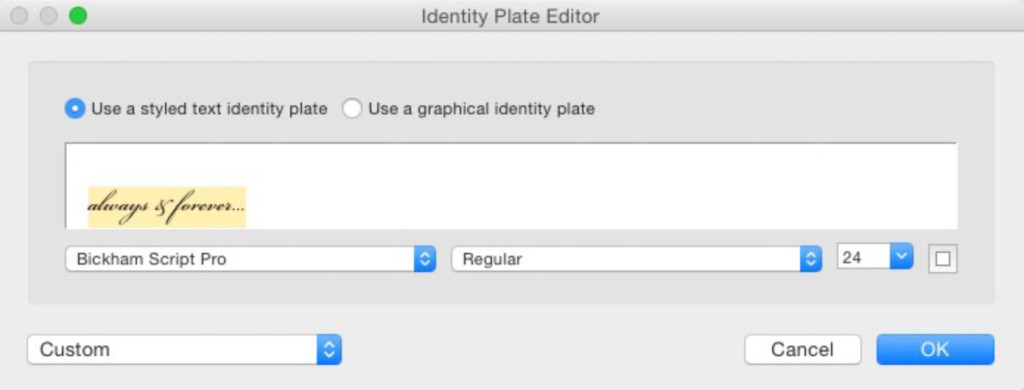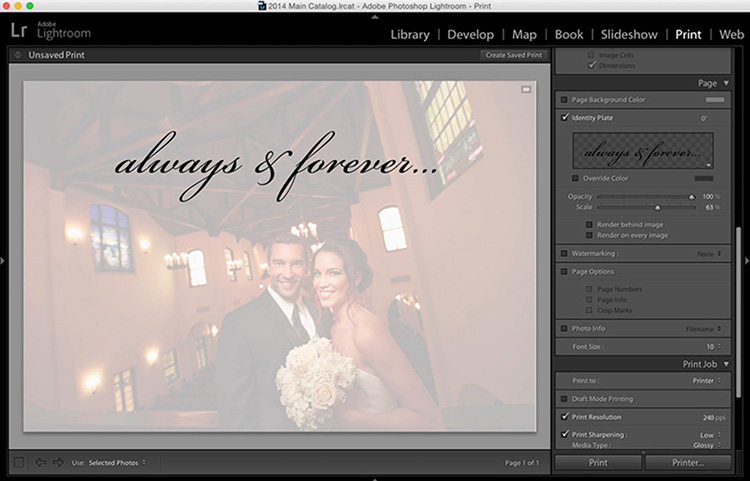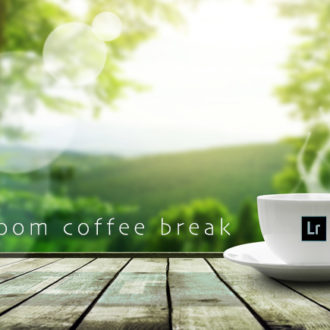Back screening Images From Right Within Lightroom
Hi gang and happy Monday. This is a tutorial I did quite a while back, but I had somebody ask me if this was possible recently, and I thought some of you — especially those new to the site in the past year or so — might find it helpful.
Back-screening is a popular method of taking a full color image and lightening it so dramatically that you can easily put text over it and have it be clearly readable, or add another smaller inset photo on top of it and have it stand out, etc.. You’ll see this used a lot for the title slide of a slideshow or maybe in a wedding book, or just for an effect.
You start in the Develop module but finish in the Print Module where you can save your image as a JPEG and then re-import it and use it anywhere (from a photo book to a print to a slideshow — all in Lightroom). Here’s how:
STEP ONE:
Here’s the original image open in Lightroom. Now, in the Develop Module, go the Tone Curve panel (as seen here).
STEP TWO:
Grab the bottom left corner point of the Curve (well, of the diagonal straight line), and drag straight upward (as seen here). The higher you drag, the more pronounced the back-screened effect will be. NOTE: if your Tone Curve dialog looks different than the one you see here, click the icon in the bottom right corner of the panel to toggle it on.
STEP THREE:
Now bounce over to the Print Module; scroll down to the Page module and turn on the Checkbox for Identity Plate. Now click and hold on the bottom right corner of the Identity Plate preview (in the Page module) and from the pop-up menu choose Edit to bring up the Identity Plate Editor you see above. Now, enter your text (I used Bickham Script Pro, but if you don’t have this font, just choose a nice script font. I also used all-lowercase just for looks).
STEP FOUR:
When you click the “OK” button in the Identity Plate Editor it adds your text (though it will be centered, so in this case I just clicked and dragged it up into the empty space at the top to complete the effect.). Now you can save it as a JPEG in the Print Job folder; reimport that new JPEG image (it will have the back screen effect and the type just like you see above), and use that anywhere you like within Lightroom (or anywhere else for that matter).
Pretty darn simple, eh? I love it when they’re simple. 🙂
HERE’S AN OPTIONAL VARIATION:
ABOVE: You can also use this back-screen technique if you want to inset a photo on top of another photo (as seen above) using the Print Module’s Custom Package feature. If you all want me to do a quick tutorial on how to do this variation, let me know and I’ll put one together for ya. (By the way: I changed the font here to P22-Cezanne).
Hope that starts your Monday off with something useful.
Best,
-Scott
P.S. I’m here in the UK today speaking at “The Photography Show” in Birmingham. My “Super Stage” session is sold out (whoo hoo!), and I hope I get a chance to meet you here today or tomorrow before I head back. Also, if you want to see some of my goings-on here in London the past few days, pop over to my blog today for stories and behind-the-scenes photos.








[…] post Back screening Images From Right Within Lightroom appeared first […]
Yup, a tutorial would be great. Couldn’t make your NYC event; maybe next time.
How to do the overlap of picture on picture shown:
http://lightroomkillertips.com/follow-insetting-one-photo-top-another-lightroom/
Really interesting article, I didnt know this feature existed!
Thanks for sharing!
Just a thought, the term “dude” is never used here in the UK, it’s a US term only (?) and associated originally with the youthful / surfing / marajuanna culture and beyond that, with rednecks and all that image conjurers up.
Whilst certain states in the US have legalised this drug, you’ll find marajuanna is a class B drug here and carries a prison sentence of up to 5 years, an unlimited fine or both.
Forewarned is forearmed.
Hope you’re enjoying the trip and you’re being well looked after. Stick to the beer and wine, a dram of proper whiskey too perhaps?
Recently came across the site via YouTube, so thanks for the information.
Tom
Just wanted to comment to say thanks for the tips, and to allay any fears you may have about the use of the word “dude”. While it is typically only used among the younger, hip crowd, it’s usage is common even in the UK as a friendly, colloquial way to refer to someone, similar to “mate” or “buddy”. Any drug-related connotations went a long time ago. It’s much more pleasant, in fact, than receiving an essay on morality from some random dude on the internet when you’re trying to offer helpful tips on photography and post-processing…
Keep up the good work!
would definitely try that
[…] post Back screening Images From Right Within Lightroom appeared first on Lightroom Killer […]
Hi Scott,
Sounds like you’re having a Blast in Jolly Old England! (per your blog post) This is a neat tutorial. I would definitely love to see a video on inserting the photo.
Take care and watch out for those crazy dudes you’re with!:-)
Dude.
There’s always gotta be that *one* DUDE who has to be a know it all.
How bout sticking to photography, DUDE?
Living in California my ENTIRE life, it’s part of the vernacular.
It’s 2016 – not 1965,and I’m in America,and I’m, an American.
I’ll be 90 years old still calling people dude.
Dude.